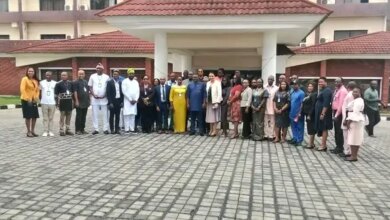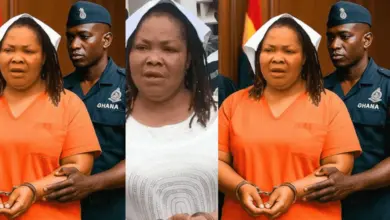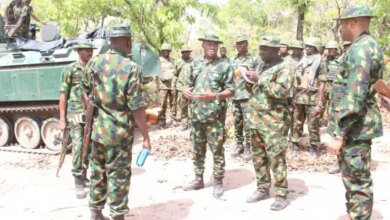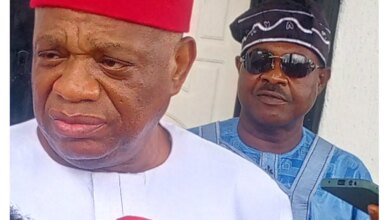Ending galamsey, restoring dignity: A Ghana plan that Africa can use
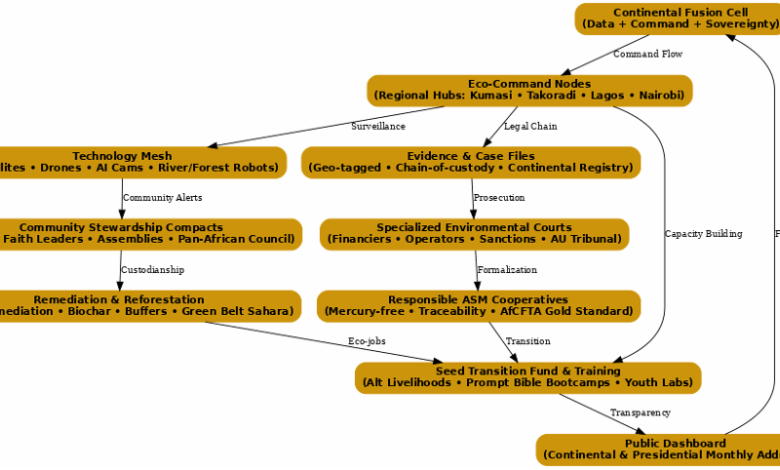
1. Introduction: From Ecological Emergency to Civilizational Choice
Illegal artisanal and small-scale gold mining—galamsey—has evolved into a multi-system crisis. It degrades water quality, accelerates forest loss, and pushes public finance into an expensive spiral of emergency treatment and rehabilitation. Yet this emergency is resolvable when legitimacy, evidence, justice, and livelihoods are operated as one machine. The approach here is time-bound: stabilise hotspots within six–12 months and run a five-year ecological recovery while moving miners and allied workers into dignified, bankable opportunities. Though tuned to Ghana’s hydrology and institutions, the design is continental by intent—grounded in socio-cultural authority, ancestral custodianship, and the political economy realities that echo across Africa’s ASM belts. It also aligns with the sovereignty thesis articulated by H.E. John Dramani Mahama at the 80th UNGA in September 2025: keep value on the continent and take decisions that secure the commons (Mahama, 2025).
2. The True Cost, in Numbers: Rivers, Forests, Soil—and Trust
Water. Ghana’s hydrology is organised into three river systems—Volta, South-Western, and Coastal—with annual runoff ≈ 54.4 billion m³ (UNECE/WRC, 2025; Agodzo et al., 2023). This geometry should dictate where sensors, courts, and remediation plants go. Empirically, contamination is severe: a 2025 EPA–Pure Earth assessment reported mercury in soils around Konongo Zongo averaging 56.4 ppm (peaks 1,342 ppm) and arsenic up to 10,060 ppm, levels associated with increased pediatric kidney disorders in mining districts (Adombila, 2025).
Forests. Satellite analysis shows tree-cover loss of 1.75 million ha in Ghana (2001–2024)—about 25% of the 2000 baseline—with ~66% of 2021–2024 loss occurring in natural forest—the very canopies that stabilise watersheds and cocoa microclimates (Global Forest Watch, 2025).
Public finance. Investigative reporting estimates ≈US$2 billion/year in foregone taxes linked to illegal mining and smuggling, coupled with rising water-treatment costs (The Guardian, 2024). In 2025, Ghana Water Limited (GWCL) publicly tied ballooning treatment costs to river pollution and proposed a ~280% tariff increase, underscoring the fiscal drag of turbidity and toxins on utilities and households (Adomonline, 2025; GBC, 2025).
The empirical message is unambiguous: the longer Ghana delays, the wider the contaminant plume and the higher the bill.
3. The Operating System: How the Model Works in Practice
The operational model in your diagram runs like a single organism. A National Fusion Cell fuses data and orchestrates action. Eco-Command Nodes execute fieldwork. A technology mesh watches quietly (satellites, drones, AI cams, river/forest robots). Evidence flows automatically into specialised environmental courts. Stewardship compacts embed legitimacy. Remediation & reforestation turn healing into paid work. Responsible ASM cooperatives mine legally with mercury-free circuits and traceability. A Seed Transition Fund powers alternative livelihoods. A public dashboard and monthly presidential address provide radical transparency.
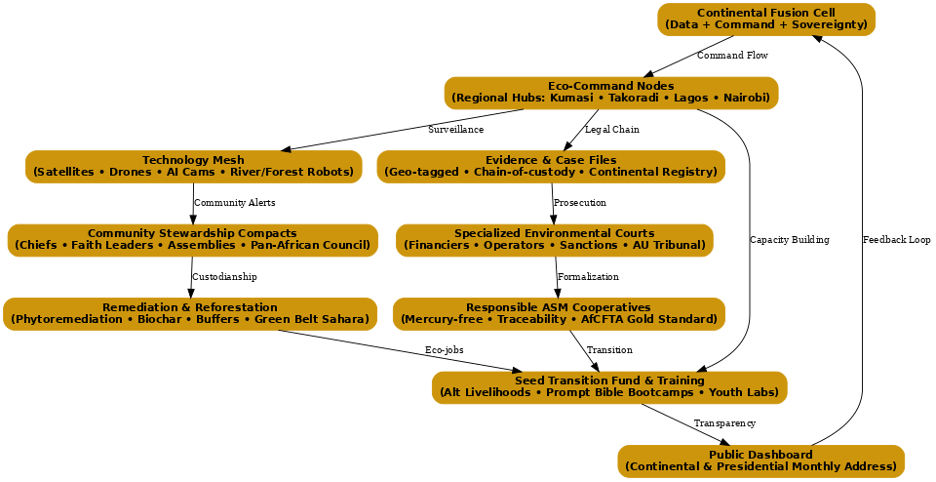
1) Continental Fusion Cell: Data, Command, Sovereignty (Empirical baselining)
- Geofence logic by basin: Volta, Coastal, South-Western; annual runoff 54.4 bn m³ anchors siting and patrol frequency (UNECE/WRC, 2025; Agodzo et al., 2023).
- Evidence pack: Each event (e.g., excavator in a buffer) creates a hashed, time-stamped dossier with imagery, permits overlay, coordinates, and a standardised chain-of-custody log for court use.
- Market link: Hosts a registry for mercury-free, traceable gold, leveraging AfCFTA to reward compliance.
2) Eco-Command Nodes: Regional Nerve Centres
- Initial hubs: Kumasi and Takoradi (Ghana), scaling to Lagos and Nairobi for continental peer learning.
- Capability: BVLOS fixed-wing mapping, multirotor confirmation, autonomous river craft for turbidity and dissolved-metal trending, forest rovers for acoustic detection.
- Evidence rooms: Trained officers manage exhibits to court standards.
3) Technology Mesh: Quiet Eyes and Ears (Evidence and deterrence)
- Satellites (Sentinel + tasked commercial) detect canopy change and river colour plumes.
- Drones: Fixed-wing for strip-mapping; multirotors with thermal/NIR for low-altitude confirmation.
- Pitch-cams: Concealed, solar, edge-AI (person/vehicle/excavator detection) sending encrypted snapshots.
- Robots: Autonomous surface vessels sample turbidity, DO, pH, dissolved metals; forest rovers detect chainsaws/engines acoustically and geo-tag.
This layer operationalises Ghana’s ongoing moves toward drone surveillance and control-room operations and then scales them (ICLG, 2025; Ghanaweb, 2025).
4) Evidence & Case Files: From Sensor to Docket
- Chain-of-custody: Every file is hashed; metadata is standardised; admissibility rules for aerial/satellite media are pre-agreed with bench and bar.
- Speed to court: Aim for ≤72 hours from detection to filing for priority offences.
5) Specialised Environmental Courts: Speed, Consistency, Deterrence
- Mandate: Prioritise financiers, equipment owners, and logistics brokers; discipline licensed operators who breach environmental rules (suspensions, remediation bonds, forfeitures).
- Policy baseline: Government announced plans in June 2025 to establish specialised environmental courts for illegal mining and tree felling (GhanaWeb, 2025; Graphic Online, 2025). Legal context: Act 995 (2019) elevated sanctions (ICLG, 2025).
6) Community Stewardship Compacts: Making Legitimacy Measurable
- Sacred River Covenants bind custodianship through public rites.
- KPIs per community: riparian buffer integrity, turbidity trends, canopy survival—all published.
7) Remediation & Reforestation: Healing as Paid Work (Empirical stack)
- Mercury & arsenic reversal:
- Floating macrophyte rafts (water hyacinth mixes) harvested → biochar to immobilise metals;
- Sulfur-modified biochar tilled into floodplain soils to reduce Hg bioavailability;
- Activated-carbon polishing at critical intakes to drop dissolved Hg quickly while long-cycle ecology works.
- Forest recovery: Pay-for-performance brigades’ plant native hardwoods and cocoa shade trees; payments triggered by satellite canopy indices. Empirical need: 1.75 Mha lost; ~66% recent loss in natural forest (GFW, 2025).
8) Responsible ASM Cooperatives: Legal Mining that Preserves Ecology
- Mercury-free processing already has a national foothold: in June 2022, Ghana commissioned 100 Gold Kacha units capable of >90% recovery without mercury (Graphic Online, 2022; Commodity Monitor, 2023; African Mining Market, 2022).
- Adoption programs: Pact and Solidaridad have distributed mercury-free equipment (Gold Kacha/Konka, shaking tables) and trained cooperatives since 2022–2023 (Pact, 2022; Solidaridad, 2023).
- Rule-set: Lease-to-own packages for lawful cooperatives; assay-verified conversion timelines for licensed operators; premiums for traceable clean gold.
9) Seed Transition Fund & Training: Dignity as Final Deterrent
- Scope: Bootcamps → six-month mentorships → tranche-based working capital for legitimate ASM and non-mining ventures (cassava/yam processing, ginger value chains, stone products, AI-enabled husbandry).
- Finance logic: 10–15% first-loss buffer; repayments revolve to new entrants.
10) Decentralized Licensing & Oversight (Erastus Asare Donkor’s Insight, Empirically Grounded)
- Problem: Donkor’s reporting shows issuance routinely exceeds field supervision capacity.
- Fix: District licensing caps tied to trained inspector headcount and sensor coverage; public permit health scores with surprise inspections and remote-sensing flags; ledger by basin. See JoyNews/MyJoyOnline coverage (MyJoyOnline, 2025; JoyPrimeTV, 2025).
11) Public Dashboard & the Monthly Presidential Address (Empirical accountability)
- Indicators published monthly by basin:
- Turbidity (NTU) and dissolved mercury at GWCL intakes;
- Net canopy change (ha) from GFW and commercial tasking;
- Court throughput (cases filed, conviction rate, asset forfeitures);
- Livelihood placements and loan performance.
- Policy backdrop: In 2025, government established GoldBod and a national task force, underscoring a pivot to enforcement and market order (AP, 2025; Reuters, 2025; JURIST, 2025).
4. Budget Envelope with Empirical Context
A 12-month stabilization budget of GHS 1.9–2.3 billion (≈US$150–180 million) covers satellite tasking/analytics; BVLOS and multirotor drones; pitch-cams and acoustic beacons; river/forest robots; Fusion Cell and eco-nodes; environmental courts; remediation supplies/works; reforestation brigades; and the Seed Transition Fund. Against this, the empirical counterfactual is stark: ≈US$2 billion/year in tax leakage and escalating utility costs (The Guardian, 2024; Adomonline, 2025; GBC, 2025).
GoG appropriations: a green bond serviced partly by reduced water-treatment costs and climate cashflows; results-based grants pegged to NTU and canopy metrics; and first-loss guarantees to crowd in banks for livelihood lending. Recent trading restrictions (e.g., limitations on foreign retail participation) and smuggling task forces help close value leaks (AP, 2025; Reuters, 2025).
- Execution Timetable with Measurable Targets
By Month 3
- Fusion Cell operational; first eco-node live (Kumasi or Takoradi).
- Persistent sensing on Pra–Offin–Ankobra–Birim corridors.
- Environmental-court benches trained; evidence templates gazetted.
- Baseline sampling at GWCL intakes (turbidity & dissolved Hg) published.
By Month 6
- Pitch-cam saturation of chokepoints; night USV patrols in high-incidence reaches.
- Remediation pilots running on 3 tributaries (macrophyte rafts + activated-carbon polishing).
- 100+ lawful cooperatives enrolled for mercury-free conversion (leveraging 2022 Gold Kacha baseline) (Graphic Online, 2022).
- First asset-forfeiture orders funding remediation pools (court stats on dashboard).
By Month 12
- Dissolved-mercury declines at pilot intakes; NTU trending toward thresholds on priority reaches.
- Reserve-edge stability is evident on satellite dashboards (GFW).
- Convictions of financiers/equipment owners recorded with sentencing bands; forfeitures reported.
- Thousands of livelihood placements trading; Seed Fund repayments revolving.
Years 2–5
- Shift to maintenance: extended reforestation corridors, floodplain soil amendment, and mature cooperatives with traceable supply.
- Climate revenue streams stabilise; jurisprudence is consistent across environmental courts.
6. Continental Portability (Measured and Managed)
The hydrologic logic (organised by basin), cultural logic (oath-based custodianship), justice logic (specialised courts with admissibility rules), and economic logic (traceable clean-gold premiums) all travel. Regional eco-nodes in Lagos and Nairobi support peer tasking on transboundary waters (UN-Water, 2024). A continental clean-gold registry incentivises empirical compliance with better prices.
7. Why This Time Can Be Different (Evidence-anchored)
- Measured baselines (runoff, NTU, dissolved Hg, canopy ha) make drift obvious.
- Court design ties evidence to speed and financier focus (announced 2025).
- Mercury-free tech already commissioned at scale (100 units in 2022; >90% recovery) and diffused via Pact/Solidaridad (2022–2023).
- Utility costs and tariff proposals now quantify the price of inaction.
- Monthly addresses normalise transparency.
8. Conclusion
Ending galamsey is not about “more raids”; it is about running the nation’s cultural authority, scientific vigilance, legal precision, and enterprise engine as one. The targets and tools here are empirical: runoff volumes, mercury ppm, NTU, hectares of canopy, conviction rates, asset forfeitures, and loan performance.
When the head of state reports these numbers monthly and the dashboard plots their direction by basin, the question becomes not “if” Ghana can end galamsey but “how fast.” The same architecture can serve Africa’s wider sovereignty project: rivers as memory, forests as infrastructure, people as the purpose.
********
Dr. Dr. David King Boison is a pioneering AI strategist, educator, and creator of the Visionary Prompt Framework (VPF), driving Africa’s transformation in the Fourth and Fifth Industrial Revolutions. Author of The Ghana AI Prompt Bible, The Nigeria AI Prompt Bible, and advanced guides on AI in finance and procurement, he champions practical, accessible AI adoption. As head of the AiAfrica Training Project, he has trained over 2.3 million people across 15 countries toward his target of 11 million by 2028. He urges leaders to embrace prompt engineering and intelligence orchestration as the next frontier of competitiveness.
DISCLAIMER: The Views, Comments, Opinions, Contributions and Statements made by Readers and Contributors on this platform do not necessarily represent the views or policy of Multimedia Group Limited.
Tags:
DISCLAIMER: The Views, Comments, Opinions, Contributions and Statements made by Readers and Contributors on this platform do not necessarily represent the views or policy of Multimedia Group Limited.
Source link

